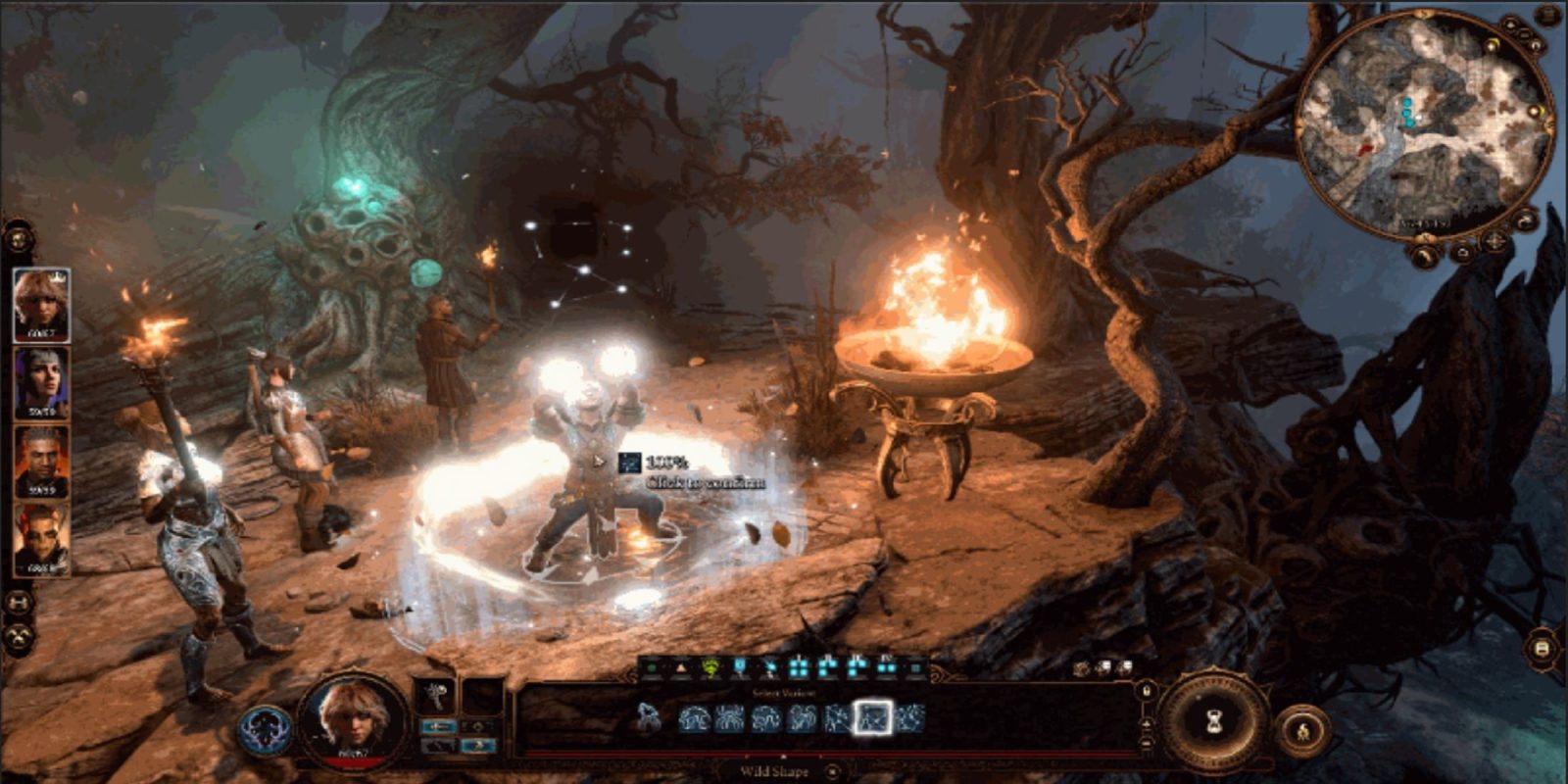Award-winning role-playing game Baldur’s Gate 3 will be adding twelve new subclasses to its lineup in early 2025, alongside the long-awaited crossplay and Photo Mode features. These include one subclass for each of Baldur’s Gate 3’s twelve existing classes. Players can make rogue Astarion even more debonair as a charming Swashbuckler or let Wyll truly live up to his “Blade of Frontiers” moniker as a Hexblade. One new subclass, the Circle of Stars Druid, introduces a fascinating new gameplay mechanic: Starry Forms, which are quite different from traditional druidic Wild Shapes.

Related
Baldur’s Gate 3: Every Character That Can Join Your Camp
Players have the opportunity to recruit several characters to their camp in Baldur’s Gate 3.
What Is A Circle Of Stars Druid?
Introduced in the Dungeons & Dragons book Tasha’s Cauldron of Everything, a Circle of Stars druid lacks the class’s typical affinity for the land, choosing instead to focus on the sky. They can take three forms based on constellations: the Archer, the Chalice, and the Dragon, each with unique properties.
The Baldur’s Gate 3 version of the subclass will focus primarily on these forms, while the Dungeons and Dragons original can also consult the cosmos to aid allies with beneficial Weal omens and inflict debilitating Woe omens on foes. At higher levels, these druids could also temporarily fly and hover while in the Dragon’s Starry Form.
The Three Starry Forms Explained
Baldur’s Gate 3 will feature all three Starry Forms included in Tasha’s Cauldron of Everything – although, as the game only goes up to Level 12, the Level 14 ability to become incorporeal in Starry Form will sadly be absent. According to a teaser image shared by Larian Studios, a druid in Starry Form will have glowing hands and a glowing aura surrounding them. The teaser also seems to show that a Circle of Stars druid will still have access to standard Wild Shape, although it does not confirm which Wild Shapes will be available to the subclass.
The Archer: Powerful Damage-Dealer
The Constellation of the Archer is the most offensively focused of the three. An Archer can make ranged spell attacks to fire astral arrows, which deal radiant damage to foes. The damage is typically based on the caster’s Wisdom modifier, and the arrows are capable of striking targets a great distance away – up to 60 feet. This will be particularly useful in Baldur’s Gate 3’s Shadow-Cursed Lands, which is teeming with shadows, undead, and other foes who are particularly susceptible to the Archer’s devastating barrage of radiant arrows.
The Chalice: Radiant Healer
The Constellation of the Chalice focuses on healing, allowing a Circle of Stars druid to back up a cleric or even serve as a party’s primary healer. While in this form, a druid’s existing healing abilities are increased, again typically based on the caster’s Wisdom modifier. They can heal both themselves and nearby allies, making this form extremely valuable during some of Baldur’s Gate 3’s toughest boss fights such as the devil Raphael or the Avatar of Myrkul. A Chalice’s healing could even be the thing that saves an Honour Mode run from an early end.
The Dragon: Wise Strategist
The Constellation of the Dragon seems to be the one that will be changing the most from its Dungeons & Dragons original, at least based on the limited information provided. Larian’s minimal description of this Starry Form states that it will allow players to “deal damage with an added bonus to Constitution rolls.” The original Dragon constellation allows players to “take 10” – treating any roll lower than a 10 as though it were a 10 – when making Wisdom or Constitution saves to maintain concentration on a spell. How this form will function in Baldur’s Gate 3, and what changes will be made, remains to be seen.













Leave a Reply